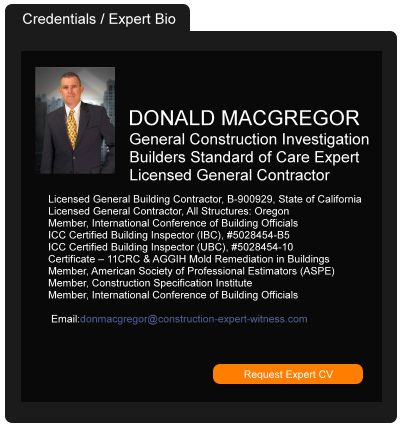Using Lien and Bond Claims to Secure Project Payments
March 01, 2021 —
Jonathan Cheatham - Construction ExecutiveWhile suing in court for payment on a construction project is nothing new, the very notion of non-payment tends evokes images of hard-working contractors and subcontractors, working with tight margins, owed payment for services rendered and materials. Fortunately, for general contractors and subcontractors in the construction industry, there are better remedies for securing payment on a project before it becomes a bigger issue.
Construction projects, especially large public ones, usually include a dizzying array of general contractors, subcontractors and independent contractors, sometimes numbering more than a hundred entities. The inter-connected groups of companies working toward the goal of project completion require competent construction management in order to stay on time and on budget for completion. One of the project owner’s key tools used to ensure the process runs smoothly is the use of payment bonds and surety bonds.
Payment Bonds
Payment bonds ensure that contractors and subcontractors get paid for work performed in accordance with contract conditions. Disputes can occur before, during and even after the completion of work. Injunctive lawsuits, which contemplate the stoppage of work, would be detrimental to completing a public or private construction project of substantial size. Rather than having such minor disputes derail the entire project, the aggrieved party’s remedy is to file a claim against the payment bond, which offers a solution designed to keep the issue separate from the project’s completion. The payment bond also allows the project owner to transfer risk.
Reprinted courtesy of
Jonathan Cheatham, Construction Executive, a publication of Associated Builders and Contractors. All rights reserved.
Read the court decisionRead the full story...Reprinted courtesy of
Thank You Once Again for the Legal Elite Election for 2022
December 18, 2022 —
Christopher G. Hill - Construction Law MusingsThank you once again to those in the Virginia legal community who elected me to the Virginia Business Legal Elite in the Construction Law category for the 16th consecutive year. The 16 consecutive years of election to the Legal Elite in the Construction Category span my time as a solo construction attorney. The fact that you all have continued to elect “100%” of the lawyers at The Law Office of Christopher G. Hill, PC for the last 12 years is most gratifying and only confirms that my decision to “go solo” over 12 years ago was a good one. To be included in this list of top construction attorneys is both humbling and gratifying. For the complete list of the Virginia construction lawyers that were elected along with me, see the
2022 Virginia Business Legal Elite in Construction Law.
So without further ado, thank you to all of you who voted for me. I truly appreciate your continued confidence and support of my construction law practice. Your yearly votes always prod me to learn and continually improve to meet your expectations and keep my practice at this high level. I also couldn’t do this without the great support from friends and family (not to mention clients), so my gratitude goes out to these great folks.
Read the court decisionRead the full story...Reprinted courtesy of
The Law Office of Christopher G. HillMr. Hill may be contacted at
chrisghill@constructionlawva.com
ICC/ASHRAE/USGBC/IES Green Model Code Integrates Existing Standards
December 04, 2018 —
Nadine M. Post - Engineering News-RecordThe release this month of the 2018 edition of the International Green Construction Code marks the first time two sustainability standards developers have joined to foster green buildings and streamline code adoption. The model IgCC is now integrated with ASHRAE’s standard for high-performance buildings. And to reduce green-standard confusion even further, the 2018-IgCC is aligned with the LEED rating system program.
Read the court decisionRead the full story...Reprinted courtesy of
Nadine M. Post, ENRMs. Post may be contacted at
postn@enr.com
$6 Million in Punitive Damages for Chinese Drywall
November 27, 2013 —
CDJ STAFFJeffrey and Elisa Robin earlier were awarded $1.1 million in compensatory damages in their lawsuit against Knauf Plasterboard, the Chinese company which manufactured allegedly tainted drywall used in the Robin’s Coconut Grove, Florida home. Now a jury has awarded the couple an additional $6 million punitive damages.
The Robins’ lawyer, Victor Diaz, said it was “the best accomplishment of my legal career.”
Read the court decisionRead the full story...Reprinted courtesy of
A Guide to Evaluating Snow & Ice Cases
December 13, 2021 —
Lewis BrisboisNew York, N.Y. (November 9, 2021) - As the winter season nears, defendant property owners are reminded that New York law imposes liability for sidewalk accidents resulting from slip and falls on snow and ice. Within the City of New York, Administrative Code § 7-210 imposes liability on the owners of real property (other than single-family dwellings) to maintain an abutting sidewalk in a reasonably safe condition, which includes the removal of snow and ice.
Some of the most important issues in this area of the law were recently reaffirmed by New York’s Appellate Division in Zamora v. David Caccavo, LLC, 190 A.D.3d 895 (2d Dept. 2021). In particular, that the Court of Appeals made clear in 2019 that the statutory non-delegable duty to remove snow and ice from sidewalks extends even to out-of-possession landowners, who, although they may shift the work of maintaining the sidewalk to another, "cannot shift the duty, nor exposure and liability for injuries caused by negligent maintenance, imposed under [Administrative Code §] 7-210." Xiang Fu He v. Troon Mgt., Inc., 34 N.Y.3d 167, 174 (2019). In other words, even if the defendant leases the property to a tenant who is obligated under the lease to maintain the property in every way, including snow and ice on sidewalks, the defendant cannot escape liability by claiming the tenant is solely responsible for the plaintiff’s loss. On the other hand, property owners are not strictly liable for all personal injuries that occur on the abutting sidewalks, because the statute "adopts a duty and standard of care that accords with traditional tort principles of negligence and causation." Xiang Fu He v. Troon Mgt., Inc., 34 N.Y.3d at 171.
Read the court decisionRead the full story...Reprinted courtesy of
Lewis Brisbois
New 2021 ALTA/NSPS Land Title Survey Standards Effective February 23, 2021
March 01, 2021 —
Emily K. Bias & Josh D. Morton - Gravel2Gavel Construction & Real Estate BlogThe “Minimum Standard Detail Requirements for ALTA/NSPS Land Title Surveys” is a document jointly promulgated by the American Land Title Association (ALTA), representing the title insurance industry, and the National Society of Professional Surveyors (NSPS), representing professional land surveyors, which describes the uniform minimum standards with which surveyors must comply when preparing a survey to be used by a title insurance company for the purpose of deleting the general survey exception from ALTA title policy forms. The first such set of standards was developed in 1962 and has since been revised 10 times. The standards are currently updated every five years and are relied on by real estate professionals, including purchasers, lenders, title insurers and their attorneys, nationwide. In October 2020, a joint committee comprising representatives of both ALTA and NSPS adopted the “2021 Minimum Standard Detail Requirements for ALTA/NSPS Land Title Surveys,” which will become effective on February 23, 2021. The significant changes between the 2021 standards and the previous 2016 standards are summarized below.
Survey Matters
The 2021 standards clarify that only survey-related matters must be summarized on the survey. This revision was intended to foreclose a practice common among some institutional lenders to require that the survey list all items shown in Schedule BII of the title commitment on the face of the survey regardless of whether those items may in fact be survey related. The 2021 standards also add a requirement that the surveyor include a note specifying whether the location of a right of way, easement or other survey-related matter is shown on the survey. This change incorporates common lender and purchaser requirements that were not previously enumerated in the survey standards.
Reprinted courtesy of
Emily K. Bias, Pillsbury and
Josh D. Morton, Pillsbury
Ms. Bias may be contacted at emily.bias@pillsburylaw.com
Mr. Morton may be contacted at josh.morton@pillsburylaw.com
Read the court decisionRead the full story...Reprinted courtesy of
Green Construction Trends Contractors Can Expect in 2019
May 01, 2019 —
Emily Folk - Construction ExecutiveThe construction industry has come a long way since it was started building homes out of logs and sticks. Modern homes and buildings are marvels of engineering filled with wood, concrete and steel—much of which could be recycled if the building were ever torn down. Green construction is a growing field that will continue to expand in the coming year. What green construction trends can we expect to see in the coming year?
Augmented and Virtual Reality
Augmented reality (AR) is growing more popular every year for games and entertainment, but it also has some applications in green construction. AR and virtual reality (VR) programs, either through a headset or on a smartphone, can be used to improve collaboration between companies, allowing each company to see a virtual overlay of their stage of the project.
For green and eco-friendly construction, it can be used to show how a finished product will look on undeveloped land, making it easier to judge the ecological impact of the project. The use of AR and VR in green construction is still in its infancy, though we will likely start to see more of it in 2019.
Reprinted courtesy of
Emily Folk, Construction Executive, a publication of Associated Builders and Contractors. All rights reserved.
Read the court decisionRead the full story...Reprinted courtesy of
Earth Movement Exclusion Bars Coverage
March 19, 2015 —
Tred R. Eyerly – Insurance Law HawaiiDamage to the YMCA recreation center was not covered due to application of the earth movement exclusion. YMCA of Pueblo v. Secura Ins. Co., 2015 U.S. Dist. Lexis 15249 (D. Colo. Feb. 6, 2015).
On October 11, 2013, the insureds discovered a leaking water line in the men's shower, where one of the shower's on/off valves had detached from the water pipe behind the wall. The leak was repaired the same day.
On October 13, 2013, the pool deck near the therapy pool and surrounding block walls shifted and collapsed. The insurer admitted there was damage to the property. Several leaks were discovered in the pipes under and near the therapy pool, and the pool lost several inches of water.
Read the court decisionRead the full story...Reprinted courtesy of
Tred R. Eyerly, Insurance Law HawaiiMr. Eyerly may be contacted at
te@hawaiilawyer.com


































































